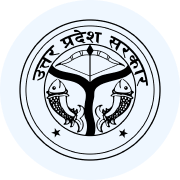Super TET Exam > Super TET Videos > Science for Super TET > Regular(Specular) and Diffuse Reflection
Regular(Specular) and Diffuse Reflection Video Lecture | Science for Super TET
|
59 videos|118 docs|73 tests
|
FAQs on Regular(Specular) and Diffuse Reflection Video Lecture - Science for Super TET
| 1. What is the difference between regular (specular) and diffuse reflection? |  |
Ans. Regular (specular) reflection refers to the reflection of light from a smooth surface, where light rays are reflected at the same angle as they strike the surface. Diffuse reflection, on the other hand, occurs when light is reflected from a rough or uneven surface and scatters in different directions.
| 2. How does regular (specular) reflection contribute to the formation of images? |  |
Ans. Regular (specular) reflection plays a crucial role in the formation of images. When light rays reflect from a smooth surface, such as a mirror, they maintain their angle of incidence, allowing our eyes to perceive a clear and undistorted reflection, resulting in the formation of accurate images.
| 3. What causes diffuse reflection? |  |
Ans. Diffuse reflection is caused by the roughness or irregularity of a surface. When light strikes such a surface, it encounters multiple reflections and scatters in various directions. This scattering effect causes the light to be diffused rather than being reflected at a specific angle.
| 4. How does the type of reflection affect the appearance of an object? |  |
Ans. The type of reflection, whether regular (specular) or diffuse, significantly impacts the appearance of an object. Regular reflection results in a mirror-like reflection, allowing us to see a clear and distinct image of the object. In contrast, diffuse reflection scatters light in various directions, making the object appear less defined and less reflective.
| 5. Can regular (specular) and diffuse reflection occur simultaneously on the same surface? |  |
Ans. Yes, regular (specular) and diffuse reflection can occur simultaneously on the same surface. This often happens when a surface has both smooth and rough areas. The smooth areas will exhibit regular reflection, while the rough areas will contribute to diffuse reflection. As a result, the surface may appear partially reflective and partially scattered, depending on the viewing angle and the characteristics of the surface.
|
59 videos|118 docs|73 tests
|

|
Explore Courses for Super TET exam
|

|
Signup for Free!
Signup to see your scores go up within 7 days! Learn & Practice with 1000+ FREE Notes, Videos & Tests.
Related Searches

















